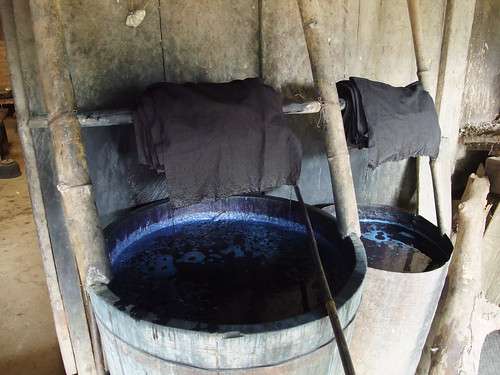
Effluent treatment is critical to protecting both the environment and human health from the damaging effects of textile dyeing wastewater.
Image Source: Unsplash user Erik Sandybaev
The students at Genda Government Primary School in Bangladesh don’t have to buy fashion magazines to know the latest color trends; they don’t have to visit Vogue’s website or even visit a shop. The canal will tell them. “Sometimes it is red. Or gray. Sometimes it is blue,” says teacher Tamanna Afrous, “It depends on the colors they are using in the factories.”1 The canal, which runs behind the schoolhouse, is a dumping ground for factory wastewater, collecting the remnants of nearby textile dyeing plants, which use extraordinary amounts of water for the dyeing process. The toxic nature and coloration of the chemicals have killed the possibility of life in the canal, as sunlight and oxygen are unable to penetrate the water. And the damage isn’t limited to life in the canal; at times the fumes make it impossible for students to focus on their schoolwork as they are overcome by nausea and lightheadedness. In Bangladesh, this situation isn’t unique; across the country, textile wastewater has created “what experts describe as a water pollution disaster,” filling rice paddies with poisonous chemicals, damaging natural ecosystems and farmland, and threatening public health.
In the West, public awareness of pollution caused by the textile industry in the developing world has been slow to take hold and those most affected often have the least amount of power to spur more environmentally-responsible practices. However, as digital images of bright red rivers are disseminated online and activist groups, environmental experts, and public health officials agitate for change, progress is being made; in recent years, a number of innovative new dyeing processes that eliminate or minimize the use of water have been introduced and are currently being used by a small number of major textile producers.2 But while “waterless dyeing should be the textile industry’s holy grail, [its] widespread adoption is years away.” In the meantime, textile wastewater effluent treatment is the most effective way of reducing pollution from textile dyeing processes. The evaluation of existing effluent treatment methods and development of new treatment technologies depends on spectrophotometric measurement to optimize efficacy, minimize environmental damage, and preserve the health and wellbeing of people.

Virtually all clothing items produced around the world get their color from water-intensive dyeing processes that introduce dangerous chemicals to the environment if not treated adequately. Image Source: Pexels user Jeff Sheldon


